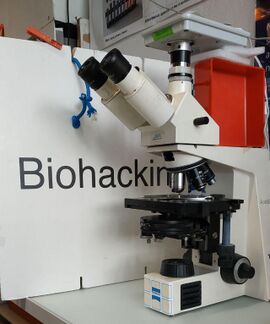Difference between revisions of "Automatic stage"
| Line 1: | Line 1: | ||
== Goal == | == Goal == | ||
| − | For the [[Genomic Integrity 2018]] project, and more specifically to analyze the results of the comet cell assay [[chip for genomic integrity]], we needed an automatic moving stage. | + | For the [[Genomic Integrity 2018]] project, and more specifically to analyze the results of the comet cell assay [[chip for genomic integrity 2018]], we needed an automatic moving stage. |
| − | One microscope at [[Hackuarium]] is already equipped with a camera linked to a camera with a | + | One microscope at [[Hackuarium]] is already equipped with a camera linked to a camera with a Raspberry Pi. Thus, the idea is to be able to use this camera in order to automatically take pictures of a whole slide for example. This would allow us to count cells on a slide for instance. |
=== General concept === | === General concept === | ||
Revision as of 14:57, 28 August 2018
Goal
For the Genomic Integrity 2018 project, and more specifically to analyze the results of the comet cell assay chip for genomic integrity 2018, we needed an automatic moving stage.
One microscope at Hackuarium is already equipped with a camera linked to a camera with a Raspberry Pi. Thus, the idea is to be able to use this camera in order to automatically take pictures of a whole slide for example. This would allow us to count cells on a slide for instance.
General concept
We will implement the automatic stage on our Zeiss Axiolab E re. This microscope is an upright microscope.
The microscope possesses two weels to move the stage in the x and y direction, and two others to focus the sample (z direction).
The first goal of our automatic stage is to be able to move automatically the sample in the xy directions. To do so, two weels were 3D printed to be put around the original ones.
